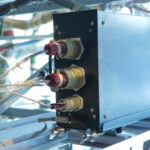
In the fast-paced world of manufacturing, optimizing processes is key to staying competitive. Wire harness assembly, a crucial component in various industries, demands efficiency to meet market demands. This blog delves into effective strategies for streamlining wire harness assembly, ensuring a boost in overall efficiency.
Wire harness assembly involves the meticulous arrangement and connection of wires and cables to facilitate the functioning of various electronic components. This intricate process, while essential, often poses challenges such as complexity and time-consuming tasks. However, adopting efficient strategies can significantly enhance the overall assembly process, leading to improved productivity and competitiveness in the market.
Wire harness assembly includes the coordinated course of action and association of wires and links to ensure the appropriate working of electronic gadgets. It assumes a significant role in different enterprises, from cars to aviation.
To assemble a wire harness successfully, one should know about its parts, which incorporate wires, connectors, terminals, and cautious sleeves.
The intricacy of current electronic frameworks presents difficulties in planning and assembling wire harnesses. Managing intricate connections demands advanced planning.
Traditional assembly methods can be time-consuming, affecting overall production timelines. Streamlining processes is essential for meeting market demands.
In current wire harness assembly, proficiency isn’t just an objective, but a necessity. The speed of creation and, thus, an organization’s general intensity are directly impacted by effective wire harness assembly.
An efficient assembly process enhances overall productivity, ensuring timely delivery of products to the market. This positively influences customer satisfaction and brand reputation.
Utilizing Computer-Aided Design (CAD) software streamlines the planning and design phase, allowing for precise schematics and reducing errors.
Making models before full-scale creation guarantees the exactness of the wire harness design, minimizing the requirement for modifications and revisions.
Wire harness assembly times are abbreviated, mistakes are reduced, and repetitive tasks are automated when advanced mechanics are integrated into sequential construction systems.
Implementing lean inventory practices reduces waste, ensuring that materials are utilized efficiently without excess stockpiling.
Investing in a skilled workforce is crucial for efficient wire harness assembly. Trained personnel can navigate complex processes more effectively.
Providing ongoing training programs ensures that the workforce remains updated on the latest assembly techniques and technologies.
Executing continuous checking frameworks takes into account prompt identification of deformities or deviations from assembly specifications.
Integrating radio-frequency identification (RFID) innovation considers the ongoing following of each wire outfit, upgrading recognizability
Barcoding systems provide a simple and effective way to track the movement of materials and monitor the progress of each assembly.
Creating flexible assembly lines allows for quick adaptation to design changes, ensuring efficiency even in the face of evolving product specifications.
Streamlining the set-up and reprogramming of assembly lines reduces downtime and increases overall production efficiency.
Keeping a reliable and trustworthy stock of materials requires proficient coordination and correspondence with suppliers.
Collaborating with suppliers who adhere to strict quality assurance standards contributes to the overall efficiency of wire harness assembly.
Reusing waste materials is a feasible natural practice that supports corporate social obligation targets.
Investigating and utilizing environmentally acceptable materials for wire harness assembly satisfies customer needs for environmental consciousness while also supporting sustainability initiatives.
Examining case studies of businesses that successfully implemented efficient wire harness assembly provides valuable insights and practical lessons.
Drawing lessons from these case studies helps businesses avoid common pitfalls and refine their own strategies for improved efficiency.
In conclusion, streamlining wire harness assembly is not just a technical consideration; it’s a strategic move for businesses seeking a competitive edge. Implementing advanced planning, automation, workforce training, and sustainable practices contributes to an efficient assembly process. As technology continues to evolve, staying ahead of the curve ensures sustained success in the dynamic manufacturing landscape.
1. Is automation suitable for all wire harness assembly processes?
Automation is beneficial for repetitive tasks but may not be suitable for intricate processes requiring a high level of precision.
2. How can small businesses implement efficient wire harness assembly?
Small businesses can start by investing in workforce training, exploring lean manufacturing principles, and gradually incorporating automation technologies.
3. What role does quality control play in wire harness assembly?
Quality control is paramount to ensuring that each wire harness meets industry standards, reducing defects, and enhancing overall product reliability.
4. Are there specific environmental certifications for sustainable wire harness assembly?
Yes, businesses can seek certifications such as ISO 14001 for environmental management systems to demonstrate their commitment to sustainability.
5. How can flexible assembly lines adapt to changes in product design?
Flexible assembly lines are designed to quickly reconfigure and adapt to changes in product design, minimizing downtime and ensuring efficiency.